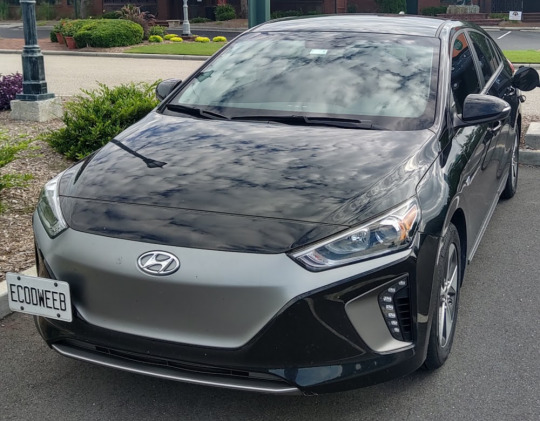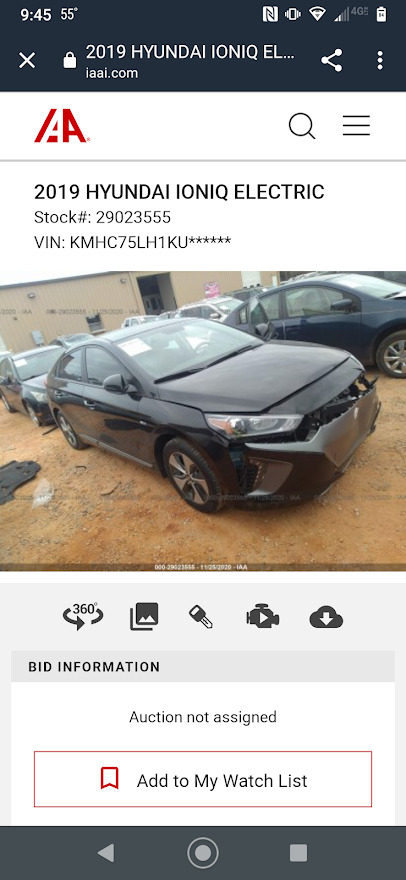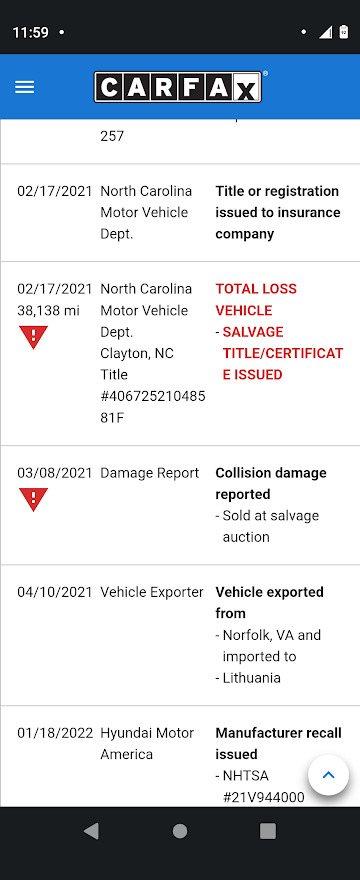#when Do The 2020 Hyundai Ioniq Come Out
Explore tagged Tumblr posts
Text
Alanis: 2019 Hyundai Ioniq Electric SE

May of 2019 I’d say goodbye to Gopher the Smart Car and upgrade to a full BEV with enough highway range to travel almost half way across the country.
Service Stats
In Service Date: 5/18/2019 In Service Mileage: 99 Out of Service Date: 9/15/2020 Out of Service Mileage: 37,455 Service Life: 1 year 6 months, 37,356 miles Avg. Miles/yr: ~28,000
The History & Story
I wrote up the reason behind buying this car in another blog post. The short of it is that I wanted to be able to test more of the Electrify America chargers that were coming online faster than I could do it with my Energica Eva motorcycle. This is the second third brand new car I’d ever bought in my life, and before taxes I financed less than $30,000 out the door and after tax credit the car cost me less than $22,000. The era of affordable electrics is upon us!

Fast forward to September 2020. I needed a vehicle more capable of towing (even after adding a hitch to this car). The Hyundai was sold a few days after I traded it in and was living in the Concord area until November, when the new owner rear ended somebody in traffic and totaled the car. I got a text message from the Hyundai connected services, which hadn’t been turned off yet because the title transfer hadn’t happened, that the vehicle had been in a collision. I ran a carfax report on the car in 2022 and found that after selling at auction for $23,000 it was exported to Lithuania. This car was enrolled in the Recurrent Battery Study and last reported a battery reading March of 2021.


0 notes
Text
We took a ride in Hyundai's self-driving car and survived
Hyundai is showing off its prototype Ioniq self-driving car at CES 2017, the massive consumer tech show in Las Vegas this week. What better way to find out how well this autonomous vehicle operates than to put my life in this robot’s cold, unfeeling metaphorical hands?
Okay, it wasn’t exactly that dramatic, and that’s exactly the point. Traveling around Hyundai’s pre-set 2.8-mile loop in the Ioniq felt about the same as being driven by a cab driver, you know, just without the awkward conversation.

We hit the road in the Hyundai Ioniq autonomous prototype.
Hyundai sends the Ioniq out along a pre-set route because of the kind of technology the company uses in its autonomous vehicle. See, Hyundai is using a system that takes advantage of LiDAR (light detection and ranging) sensors that can “see” where the car is on the road and utilize detailed mapping data.

A close-up of one of three LiDAR sensors on the Hyundai Ioniq prototype.
The car uses its three LiDAR sensors built into its front bumper and compares where the car is with where it should be on the map. Using that, a series of cameras that can see lanes, pedestrians and other cars, as well as a highly accurate GPS, the Ioniq is able to stay on course with an accuracy of 50 centimeters. That’s pretty good.
Ford (F) actually uses a similar system in its own autonomous vehicles to help them navigate snow-covered roads.
The fact that Hyundai is running its vehicles on the same router over and over again may not seem impressive, but in truth it’s actually quite incredible. That’s because while the road might not change, the cars and pedestrians around it do.
During our trip, the Ioniq detected pedestrians crossing in a crosswalk when it could have made a right turn on red and knew to stay put. The car also managed to make a right turn on red when it was clear at a different intersection and correctly identified when it needed to come to a stop at red lights.

The Ioniq autonomous prototype uses a series of cameras to detect lanes and other vehicles.
While a number of companies are working on autonomous vehicles, Hyundai’s offering is especially interesting, because the self-driving vehicle is built using an existing car, the Ioniq, and modern-day technology. And rather than looking like a car with all sorts of gadgets glued to the top that you wouldn’t be caught dead driving around in, the Ioniq looks like a normal car.

Nearly 3 miles in a self-driving car and we didn’t have to press this button once.
But don’t get your hopes up just yet. Hyundai says it will take until about 2020 for its autonomous technology to let us drive around without having to pay attention to the road and for regulators to put the proper laws and regulations into place.
Still, riding in the Ioniq proves that attractive, functional autonomous cars aren’t far off.
More of Yahoo Finance’s CES coverage:
Lenovo’s Smart Assistant uses Amazon’s Alexa to control your home
What to expect this week at CES, the world’s biggest gadget show
Lenovo’s X1 Carbon is a beautiful, beefy business laptop
Fiat Chrysler’s Portal concept is an upgradable car for millennials
The Norton Core is a beautiful Wi-FI router that protects your digital home
Samsung’s Family Hub 2.0 is a refrigerator you can talk to
Samsung’s new washing machine will save you time and aggravation
The biggest busts from the world’s most renowned gadget show
Email Daniel at [email protected]; follow him on Twitter at @DanielHowley.
#_uuid:02ad8218-8f93-3d4d-a5a3-8cf18a4f3fd8#$005380.KS#$F#_lmsid:a077000000BAh3wAAD#_revsp:yahoofinance.com#_author:Daniel Howley
4 notes
·
View notes